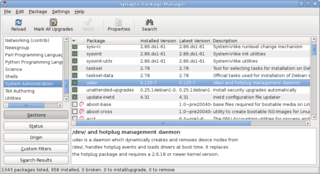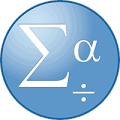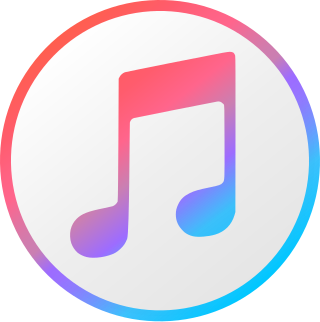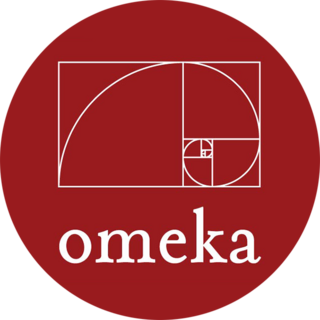In computing, Common Gateway Interface (CGI) is an interface specification that enables web servers to execute an external program to process HTTP/S user requests.
Project Gutenberg (PG) is a volunteer effort to digitize and archive cultural works, as well as to "encourage the creation and distribution of eBooks." It was founded in 1971 by American writer Michael S. Hart and is the oldest digital library. Most of the items in its collection are the full texts of books or individual stories in the public domain. All files can be accessed for free under an open format layout, available on almost any computer. As of 3 October 2015, Project Gutenberg had reached 50,000 items in its collection of free eBooks.

The World Wide Web is an information system that enables content sharing over the Internet through user-friendly ways meant to appeal to users beyond IT specialists and hobbyists. It allows documents and other web resources to be accessed over the Internet according to specific rules of the Hypertext Transfer Protocol (HTTP).

WordPerfect (WP) is a word processing application, now owned by Alludo, with a long history on multiple personal computer platforms. At the height of its popularity in the 1980s and early 1990s, it was the dominant player in the word processor market, displacing the prior market leader WordStar.

A package manager or package-management system is a collection of software tools that automates the process of installing, upgrading, configuring, and removing computer programs for a computer in a consistent manner.

SPSS Statistics is a statistical software suite developed by IBM for data management, advanced analytics, multivariate analysis, business intelligence, and criminal investigation. Long produced by SPSS Inc., it was acquired by IBM in 2009. Versions of the software released since 2015 have the brand name IBM SPSS Statistics.

iTunes is a software program that acts as a media player, media library, mobile device management utility, and the client app for the iTunes Store. Developed by Apple Inc., it is used to purchase, play, download, and organize digital multimedia, on personal computers running the macOS and Windows operating systems, and can be used to rip songs from CDs, as well as play content with the use of dynamic, smart playlists. Options for sound optimizations exist, as well as ways to wirelessly share the iTunes library.
Reference management software, citation management software, or bibliographic management software is software that stores a database of bibliographic records and produces bibliographic citations (references) for those records, needed in scholarly research. Once a record has been stored, it can be used time and again in generating bibliographies, such as lists of references in scholarly books and articles. Modern reference management applications can usually be integrated with word processors so that a reference list in one of the many different bibliographic formats required by publishers and scholarly journals is produced automatically as an article is written, reducing the risk that a cited source is not included in the reference list. They will also have a facility for importing bibliographic records from bibliographic databases.

OCLC, Inc., doing business as OCLC, is an American nonprofit cooperative organization "that provides shared technology services, original research, and community programs for its membership and the library community at large". It was founded in 1967 as the Ohio College Library Center, then became the Online Computer Library Center as it expanded. In 2017, the name was formally changed to OCLC, Inc. OCLC and thousands of its member libraries cooperatively produce and maintain WorldCat, the largest online public access catalog in the world. OCLC is funded mainly by the fees that libraries pay for the many different services it offers. OCLC also maintains the Dewey Decimal Classification system.
Napster is a music streaming service based in Seattle, Washington, United States. Until 2016, the service was known domestically as Rhapsody before rebranding as Napster, the same name brand that was used by Roxio's Napster.
Artstor is a nonprofit organization that builds and distributes the Digital Library, an online resource of more than 2.5 million images in the arts, architecture, humanities, and sciences, and Shared Shelf, a Web-based cataloging and image management software service that allows institutions to catalog, edit, store, and share local collections.

In libraries, art galleries, museums and archives, an accession number is a unique identifier assigned to, and achieving initial control of, each acquisition. Assignment of accession numbers typically occurs at the point of accessioning or cataloging. The term is something of a misnomer, because the form accession numbers take is often alpha-numeric.
The change request management process in systems engineering is the process of requesting, determining attainability, planning, implementing, and evaluating of changes to a system. Its main goals are to support the processing and traceability of changes to an interconnected set of factors.

SharePoint is a web-based collaborative platform that integrates natively with Microsoft 365. Launched in 2001, SharePoint is primarily sold as a document management and storage system, although it is also used for sharing information through an intranet, implementing internal applications, and for implementing business processes.

Metadata is "data that provides information about other data", but not the content of the data itself, such as the text of a message or the image itself. There are many distinct types of metadata, including:

Omeka is a free, open-source content management system for online digital collections. As a web application, it allows users to publish and exhibit cultural heritage objects, and extend its functionality with themes and plugins. A lightweight solution in comparison to traditional institutional repository software like DSpace and Fedora, Omeka has a focus on display and uses an unqualified Dublin Core metadata standard.
Email management is a specific field of communications management for managing high volumes of inbound electronic mail received by organizations. Today, email management is an essential component of customer service management. Customer service call centers currently employ email response management agents along with telephone support agents, and typically use software solutions to manage emails.

Museum informatics is an interdisciplinary field of study that refers to the theory and application of informatics by museums. It represents a convergence of culture, digital technology, and information science. In the context of the digital age facilitating growing commonalities across museums, libraries and archives, its place in academe has grown substantially and also has connections with digital humanities.
Past perfect is a verb tense which represents actions that occurred before other actions in the past.
A Collections Management System (CMS), sometimes called a Collections Information System, is software used by the collections staff of a collecting institution or by individual private collectors and collecting hobbyists or enthusiasts. Collecting institutions are primarily museums and archives and cover a very broad range from huge, international institutions, to very small or niche-specialty institutions such as local historical museums and preservation societies. Secondarily, libraries and galleries are also collecting institutions. Collections Management Systems (CMSs) allow individuals or collecting institutions to organize, control, and manage their collections' objects by “tracking all information related to and about” those objects. In larger institutions, the CMS may be used by collections staff such as registrars, collections managers, and curators to record information such as object locations, provenance, curatorial information, conservation reports, professional appraisals, and exhibition histories. All of this recorded information is then also accessed and used by other institutional departments such as “education, membership, accounting, and administration."










